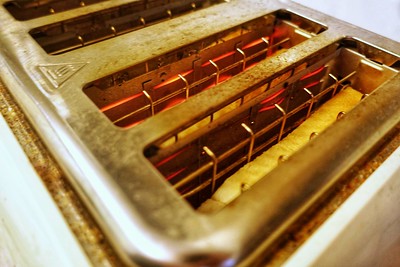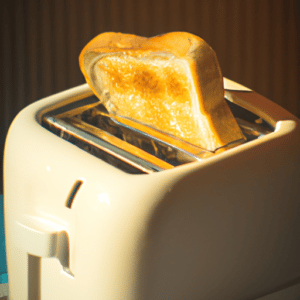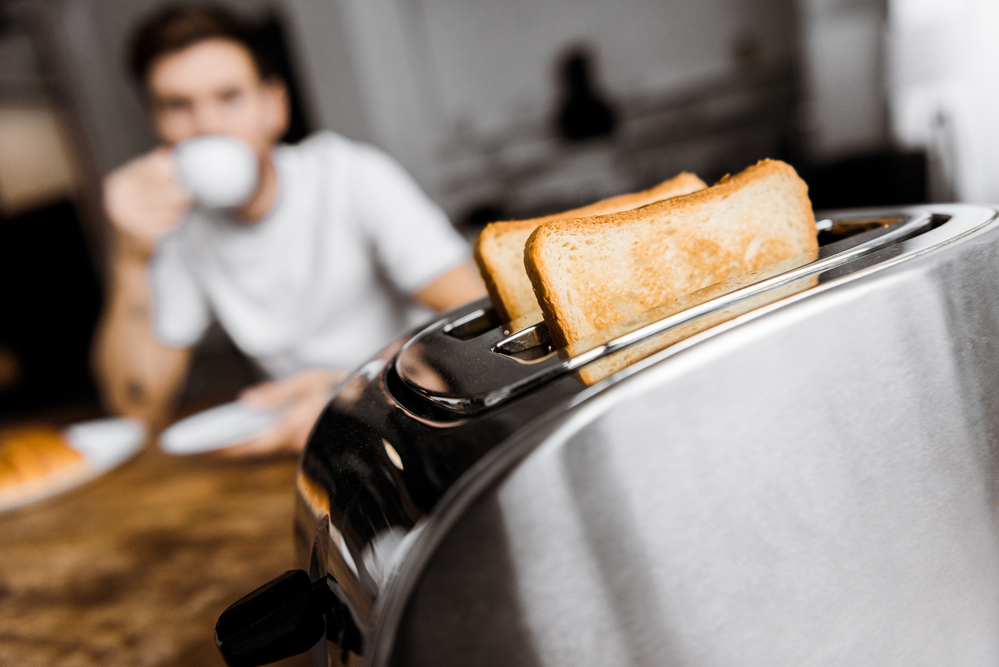When was the last time you stopped and asked yourself how one of your kitchen appliances works? Whether you find the internal dynamics of things entertaining or not, you can’t deny that deep down inside, you have a spark of curiosity.
Although we use our toasters every day, there is a lot that we don’t know about their mechanisms and how they create perfectly toasted bread every time.
Today we will answer the question, how does a toaster work? So, if this has piqued your interest, keep reading to quench your curiosity.
The Inside of a Toaster
There is more to a toaster than the bread slots and the toasting panels that you see regularly. The intricate inner parts of a toaster are where all the mysteries lie. We will take a technical approach to this piece as we explain what each part does.
We will also focus on how each inner part of the toaster contributes to the making and working of a toaster. At the end of this article, you will fully understand how a toaster works. If you shop for a toaster today, you will come across different types and makes.
While they are different, they more or less work in the same way.
Heat

When you plug in an electric toaster, the electric current flows into the toaster and is converted into infrared radiation, making toasters miniature radiators. This radiation, in turn, creates the heat that toasts your bread. The heat from the sun is one of the most common forms of infrared heat.
Just like when the reflected light from the sun comes into contact with your skin and you begin to warm up, the same happens to your slice of bread. Infrared heat is the most common heat source in many home appliances, including ovens, household hair dryers, water heaters, and other household devices.
When you insert your slice of bread into the toaster, you can observe the radiant heat when you turn the toaster on. The light from the glowing red wires is a product of this radiation, which results in metal heat. All the energy from this radiation on your bread makes it crispy and allows it to turn brown.
Heat penetrates your bread in the form of light. This makes the molecules in the bread move faster during this process and creates a lot of friction, too. While this is happening, the cooking process is sped up, utilising infrared radiation and conduction to cook the bread inside and out.
Heating Element

Now that you know how heat from the toaster cooks your toast – let us look at where this heat comes from. If you are to look through your toaster slots when it is in use, you will spot a red light. This red light is from the heating elements found inside a toaster.
These heating elements work with very minimal energy that is converted to heat. They are made of a nichrome wire that features a couple of plates called mica sheets. Mica is a common substance used when making heat-resistance items. It is built to withstand a consistent electric current.
The nichrome wires are made of chromium and nickel alloys. This combination is rust-proof and withstands very high temperatures. Whenever an electrical current is flowing through the wires and the mica plate, the electrons collide. This converts the electricity to heat and causes them to glow red.
The Toasting Process
To better understand how exactly a toaster works, we have broken the process into eight parts.
Part 1: Power In
Once you plug in the toaster to the main power outlet, the toaster is still not yet on. To do this, press or touch the ON button to switch it on. Before doing this, make sure that you have put your bread slices into the toasting slots.
Part 2: Bread in Position
Once your sliced bread is inside the slot, push down the slices into the toaster. Most machines will feature a handle or main lever on the toaster to begin toasting bread.
Part 3: Firing It Up
Once the bread is lowered into the toaster, a wedge inside the toaster gently pushes two contact points together. This, in turn, forms an electric circuit from the power supply to the toaster nichrome wires.
Part 4: Energy Flow
The wire allows an electric current to flow into them and the sheets. The electricity flows in the form of electrons. The consistency of the electric flow allows for the right temperature to get the toasting cycle started.
Part 5: Building the Heat
With the electricity flowing, the energy from the nichrome wires and sheets is converted into heat. Any excess heat is radiated from the coils to the toast. This heat cooks the toast, and before you know it, you have toasted bread.
Part 6: Period and Wattage
Toasting time is fully dependent on the settings you have chosen and how hot your toaster can get. Those that are 600W will toast your bread significantly slower than those that are 900W.
Part 7: Ejecting Mechanism
Once your toast is ready, an automatic release mechanism releases the bread slices, pushing them up and out. This is what results in toasted bread popping from the toaster.
Part 8: A Word of Caution
When your toast is ready, switch off the toaster and enjoy your freshly toasted bread. Remember never to stick any metallic item in the toaster when used. This is because metal is a good conductor of electricity, and inserting it can likely lead to electrocution.
How Does the Toaster Know When to Stop?
Today, most, if not all, toasters have a standard built-in feature called a control dial. This dial has a typical five or six display setting, but some toasters will have as many as 9 or 10.
These settings determine how long your bread should cook in your toaster. If you are going for very crisp and brown bread, you should go for the highest-level setting.
However, if you opt for a little crunch, then a low to medium toasting level is what you need. Depending on your setting, your toaster will run for a set time. And once that time is up, it pops out your toast.
A Piece of Advice on Using a Toaster
Read the manufacturer’s instruction manual before sticking any food in a toaster. Many toasters do not advocate for wet and greasy foods being put in them. This is because electricity is not a big fan of getting wet and greasy. This caution applies to all toasters – from a simple pop-up toaster to a toaster oven.
Time to Pop-Out
Now that you have the answer to the question, “how does a toaster work?” you have a little more understanding of how these seemingly simple kitchen appliances toast your bread each morning. Toasted bread can be eaten as a snack or part of a meal and is a staple in many diets.
Even though you now may know how a toaster works, you should still call a professional if your appliance begins to malfunction or look into buying a new one.

